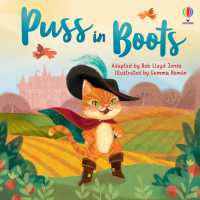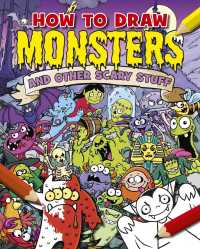Full Description
Narrative criminology is an approach to studying crime and other harm that puts stories first. It investigates how such stories are composed, when and why they are told and what their effects are. This edited collection explores the methodological challenges of analysing offenders' stories, but pushes the boundaries of the field to consider the narratives of victims, bystanders and criminal justice professionals.
This Handbook reflects the diversity of methodological approaches employed in narrative criminology. Chapters discuss the practicalities of listening to and observing narratives through ethnographic and observational research, and offer accessible guides to using diverse methodological approaches for listening to and interpreting narrative data.
With contributions from established and emerging scholars from all over the world, and from diverse fields including politics, psychology, sociology and criminology, the Handbook reflects the cutting edge of narrative methodologies for understanding crime, control and victimisation and is an essential resource for academics studying and teaching on narrative criminology.
Contents
Introduction; Jennifer Fleetwood, Lois Presser, Sveinung Sandberg, Thomas Ugelvik Part 1: Collecting Stories
Observations
and fieldwork
Chapter 2: Narrative ethnography under pressure: Researching storytelling on the street; Sébastien Tutenges
Chapter 3: Storied Justice: The Narrative Strategies of U.S. Federal Prosecutors; Anna Offit
Chapter 4: Narrative Convictions, Conviction Narratives: the prospects of convict criminology; Rod Earle
Interviews
Chapter 5: Reflections after 'Socrates Light'. Eliciting and countering narratives of youth justice officials; Olga Petintseva
Chapter 6: Stories that are Skyscraper Tall: The Place of 'Tall Tales' in Narrative Criminology; Carmen Wickramagamage and Jody Miller
Texts
Chapter 7: By Terrorists' Own Telling: Using Autobiography for Narrative Criminological Research; Simon Copeland
Chapter 8: Stories of Environmental Crime, Harm and Protection: Narrative Criminology and Green Cultural Criminology; Avi Brisman
Beyond 'Texts': Images and Objects
Chapter 9: The Stories in Images: The Value of the Visual for Narrative Criminology; Heith Copes, Andy Hochstetler and Jared Ragland
Chapter 10: Reading Pictures: Piranesi and Carceral Landscapes; Eamonn Carrabine
Chapter 11: The tales things tell: Narrative analysis, materiality and my wife's old Nazi rifle; Thomas Ugelvik, University of Oslo
Part 2: Analysing Stories
Studying
the victim
Chapter 12: Excavating Victim Stories: Making Sense of Agency, Suffering and Redemption; Elizabeth A. Cook and Sandra Walklate
Chapter 13: Narrative Victimology: Speaker, audience, timing; Kristen Lee Hourigan
Chapter 14: Finding victims in the narratives of men imprisoned for sex offences; Alice Ievins
Categorizations, Plots and Roles
Chapter 15: Narratives of Conviction and the Re-Storying of 'Offenders'; Bernd Dollinger and Selina Heppchen
Chapter 16: Police Narratives as Allegories that Shape Police Culture and Behavior; Don L. Kurtz and Alayna Colburn
Chapter 17: Revealing Criminal Narratives: The Narrative Roles Questionnaire and the Life As A Film procedure; David Canter, Donna Youngs and David Rowlands
Narrative Dialogue, the Unconscious and Absences
Chapter 18: Doing dialogical narrative analysis: Implications for narrative criminology; Dan Jerome S. Barrera
Chapter 19: "Protecting and defending mummy": Narrative criminology and psychosocial criminology; Alfredo Verde and Nicolò Knechtlin
Chapter 20: The story of antisociality: Determining what goes unsaid in dominant narratives; Lois Presser
Connecting Stories, Power, and Social Inequalities
Chapter 21: The Archived Criminal: Mandatory Prisoner Autobiography in China; Zhang Xiaoye and Dong Xianliang
Chapter 22: Opposing violent extremism through counter-narratives: Four forms of narrative resistance; Sveinung Sandberg and Jan C. Andersen
Chapter 23: Researching sex work: Doing decolonial, intersectional narrative analysis; Floretta Boonzaier








